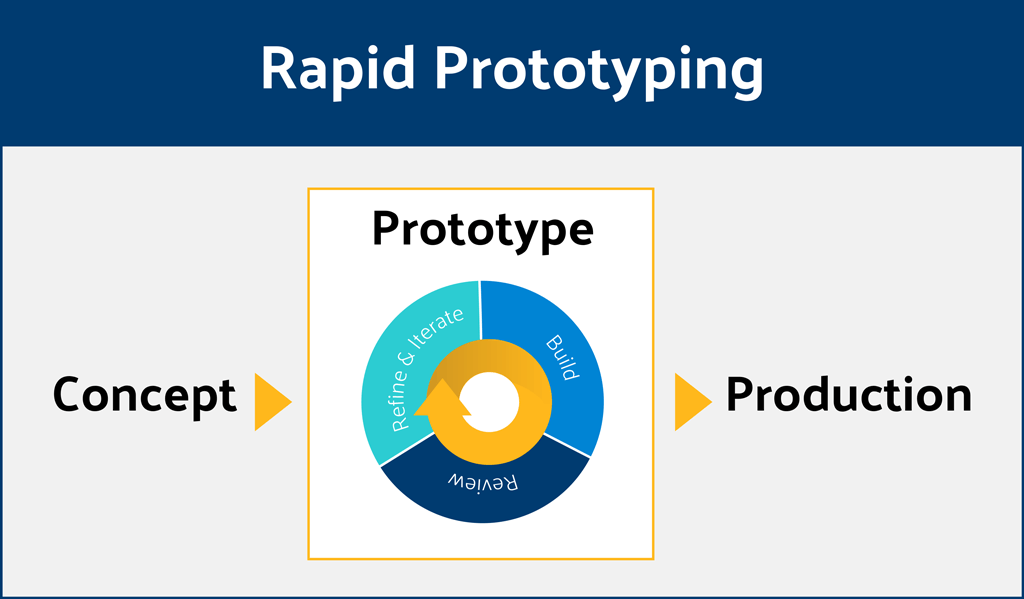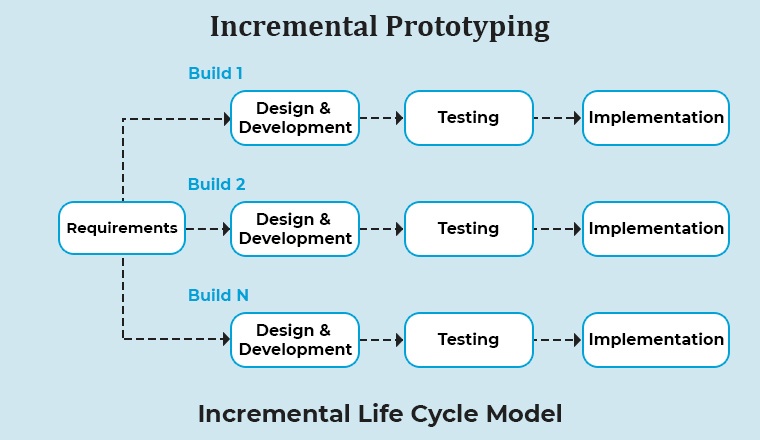What Is Software Prototyping And Why Do You Need It?
A software prototype is a simulation of how a real project work and feel, and would not have exact logic at the software development stage. Software development team members use it for designing user feedback and user testing. Software prototyping refers to the process that starts with creating an idea, sketching it, and creating a clickable prototype that mimics real software.
Software prototyping
Types
Rapid prototyping

Rapid a prototyping, as narrow and end prototyping, requires a minimal effort and requirements analysis. It goes a cycle of feedback, modification and evaluation during the time it is relevant. The prototype is retired once the real product and requirements are understood by the stakeholders.
Evolutionary prototyping
An evolutionary prototype is a piece of functional software with minimal functionality on which future prototypes of the entire system can be designed.
Incremental prototyping

Incremental prototyping means a creating functional prototypes for different subsystems and combining them into a complete system. If you are building enterprise software with many loosely coupled modules and components, incremental a prototyping is the best choice for you.
Extreme prototyping
These pages have limited interactivity, but a sufficient to demonstrate the different a paths users take to use the application. A prototype service layer to drive data processing. A integrate and implement the services into a final prototype.
Why do you need a software prototype?
For unifying the vision
Software prototypes can help you evaluate the progress and direction of applications that are still under development. They show incremental functionality and the final software product is headed adding and a significant additional resource.
For external involvement
Software development projects require the involvement of a external stakeholders, investors or customers. Properly demonstrating software in progress, prototypes can be a very useful for third party involvement. Entrepreneurs and developers can improve software based on external feedback, a critical to securing third party funding.
Evaluate the pending time and resources
Software prototype models can also be a used to evaluate possible last minute changes. Models are useful for checking software is compatible with new a requirements and changes can be a implemented deadlines or resources are exhausted.
Advantages
Reduced time and costs
The changes are exponentially an expensive to implement because the discovered later in development, early determination of the user really a wants can lead to faster and cheaper software.
Improved and increased user involvement
prototype, allowing them to provide better and a complete feedback and specifications. The domain problem, better than anyone on the development team, is an increased interaction can lead to a final product that has greater tangible and an intangible quality.
Disadvantages
User confusion of prototype and finished system
Users may begin to think that a throwaway prototype is actually a final system that just needs to be a finished or polished. A expect the prototype to accurately model the performance of the final system when that is not the intent of the developers.
Developer misunderstanding of user objectives
Developers may assume that users share their goals a understanding the broader commercial issues. If the developer has committed to deliver a reviewing the user requirements, the developers are between a rock and a hard place, especially if user a management gains some benefit from their failure to a implement the requirements.
Conclusion
A product that will not be a useful to the end users who need it. Software prototyping should be a core strategy of your development. The reduce risks, save money and a improve the user experience. A team of the best and most experienced developers who can fulfill all your software development needs.








Leave A Comment
You must be logged in to post a comment.